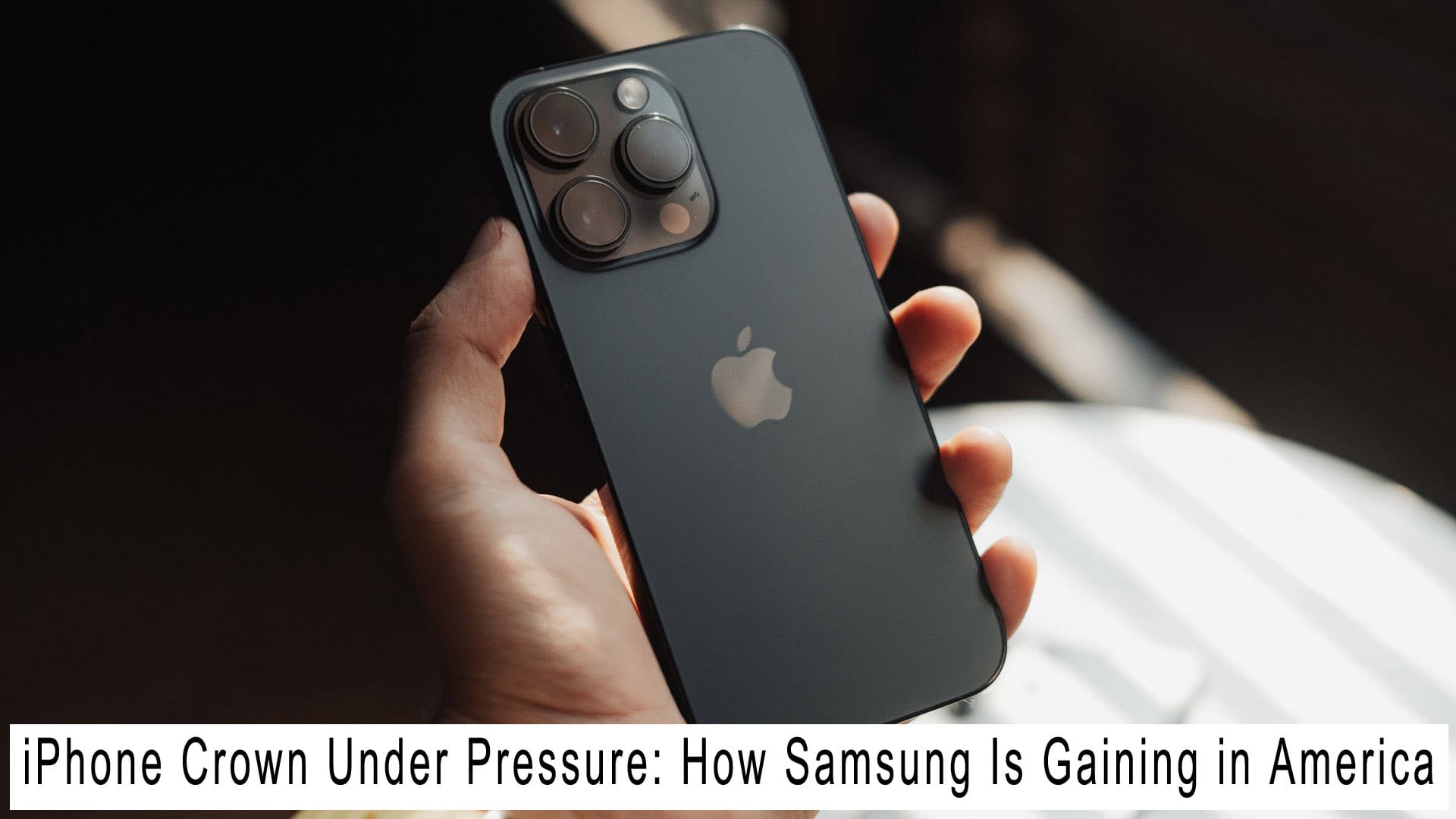iPhone Crown Under Pressure – Apple may still be the king of smartphones in the United States, but cracks are starting to show. Shipping of iPhones fell 11% year over year, according to the most recent Canalys Q2 2025 report. In the same quarter, Samsung had a remarkable 38% rise. https://wearegntlmen.com
For those who follow the mobile industry closely, these numbers are more than just statistics—they’re signals of a shifting landscape. The long-standing dominance of the iPhone in its home market may finally be under serious threat.
iPhone Crown Under Pressure:
The Numbers Don’t Lie: Samsung Is Catching Up
Let’s take a look at some recent data:
| Brand | Shipment Change YoY (Q2 2025) | US Market Share (June 2025) |
| Apple | -11% | 57.7% (StatCounter) |
| Samsung | +38% | 23.6% (StatCounter) |
While Apple still holds a commanding lead, that 11% dip in shipments is hard to ignore—especially when your main rival is growing rapidly. Samsung’s momentum raises important questions: Is this a seasonal blip for Apple, or a sign of deeper cracks in the armor?
What’s Fueling Samsung’s Surge?
So, what’s behind Samsung’s sudden rise in the US market? Industry analysts point to three major factors:
- Diverse Product Lineup
Samsung offers something for everyone, from the luxurious foldable Z series and flagship Galaxy S24 Ultra to the more reasonably priced Galaxy A series. Apple, by comparison, stays mostly in the premium lane. - Aggressive Retail Strategy
Samsung has been pumping out attractive promotions: cashback deals, trade-in programs, and exclusive carrier bundles. It’s a full-on retail assault that’s hard for consumers to resist. - Foldables Are Hot
The Z Fold5 and Z Flip5, two of Samsung’s foldables, are becoming more and more popular. Some iPhone users are jumping ship just to try something new—especially since iPhone’s design hasn’t changed much in years.
Is Apple Playing It Too Safe?
A rising number of people believe that Apple is stagnating. The iPhone 15 featured some modest improvements, like as a speedier CPU, Dynamic Island, and a better camera, but nothing revolutionary.
Add in the high price tag, and suddenly, even loyal Apple fans are hesitating. In an era where inflation bites and consumers are more price-conscious than ever, innovation must be bold, not incremental.
Don’t Forget the Tariff Threat
There’s also a political angle to this story. Former president Donald Trump is pushing for a 25% import tariff on all Chinese-made goods—including iPhones and Samsung phones. While this hasn’t happened yet, it’s a looming possibility that could shake up the US smartphone market.
The interesting twist? Samsung has already moved part of its production to Vietnam and India, while Apple still relies heavily on Chinese factories. Should the tariff be implemented, Samsung might be in a better position to absorb or avoid the associated costs.
What This Means for Tech Observers and Industry Players
If you’re an industry insider, market analyst, or a brand planning to enter the US smartphone game, here are a few takeaways:
- Consumers are more open to iPhone alternatives. That’s a huge opportunity for brands offering great value at a lower price point.
- Brand agility is key. Samsung’s ability to adapt and provide products in every price range is paying off.
- Policy shifts matter. Trade laws and tariffs aren’t just politics—they directly influence pricing, supply chains, and consumer demand.
Bottom Line: Apple Still Rules, But the Gap Is Narrowing
The market for smartphones in the United States is still dominated by Apple, let’s be clear. But if the company doesn’t reinvent itself soon—or offer something truly exciting—Samsung will keep inching closer.
And once a market leader starts bleeding market share, momentum is hard to stop.
So whether you’re a gadget geek, an investor, or a tech brand strategist, this is one trend you’ll want to watch closely. Big shifts in this industry always start with subtle data changes—and we’re seeing just that.



